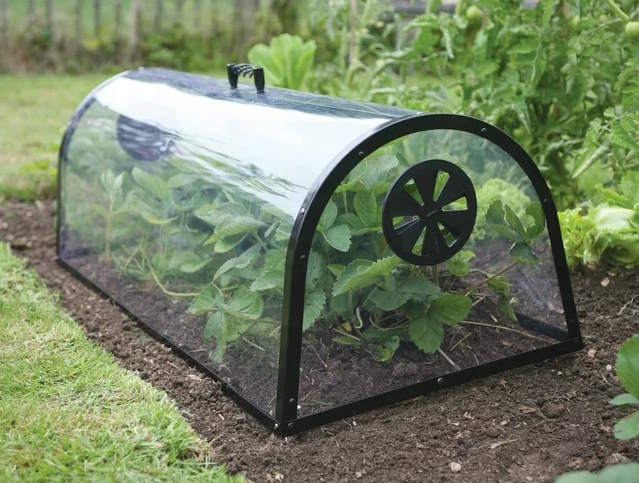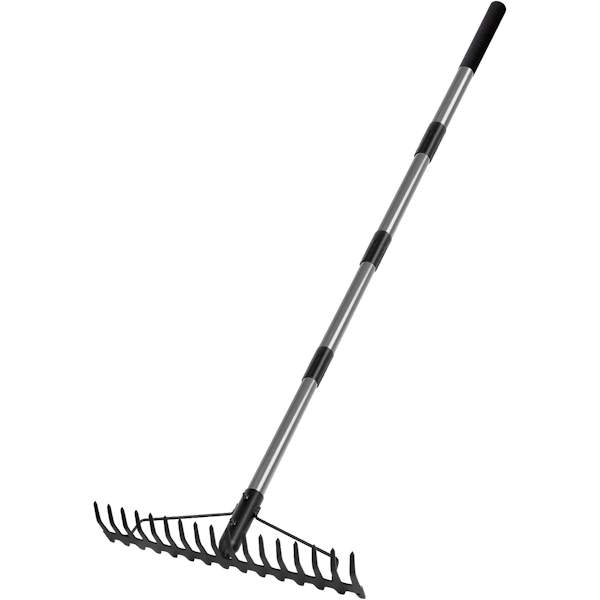How to sow seeds outdoors successfully in 7 simple steps
Discover how to plant seeds outdoors, with proven tips from a professional gardener

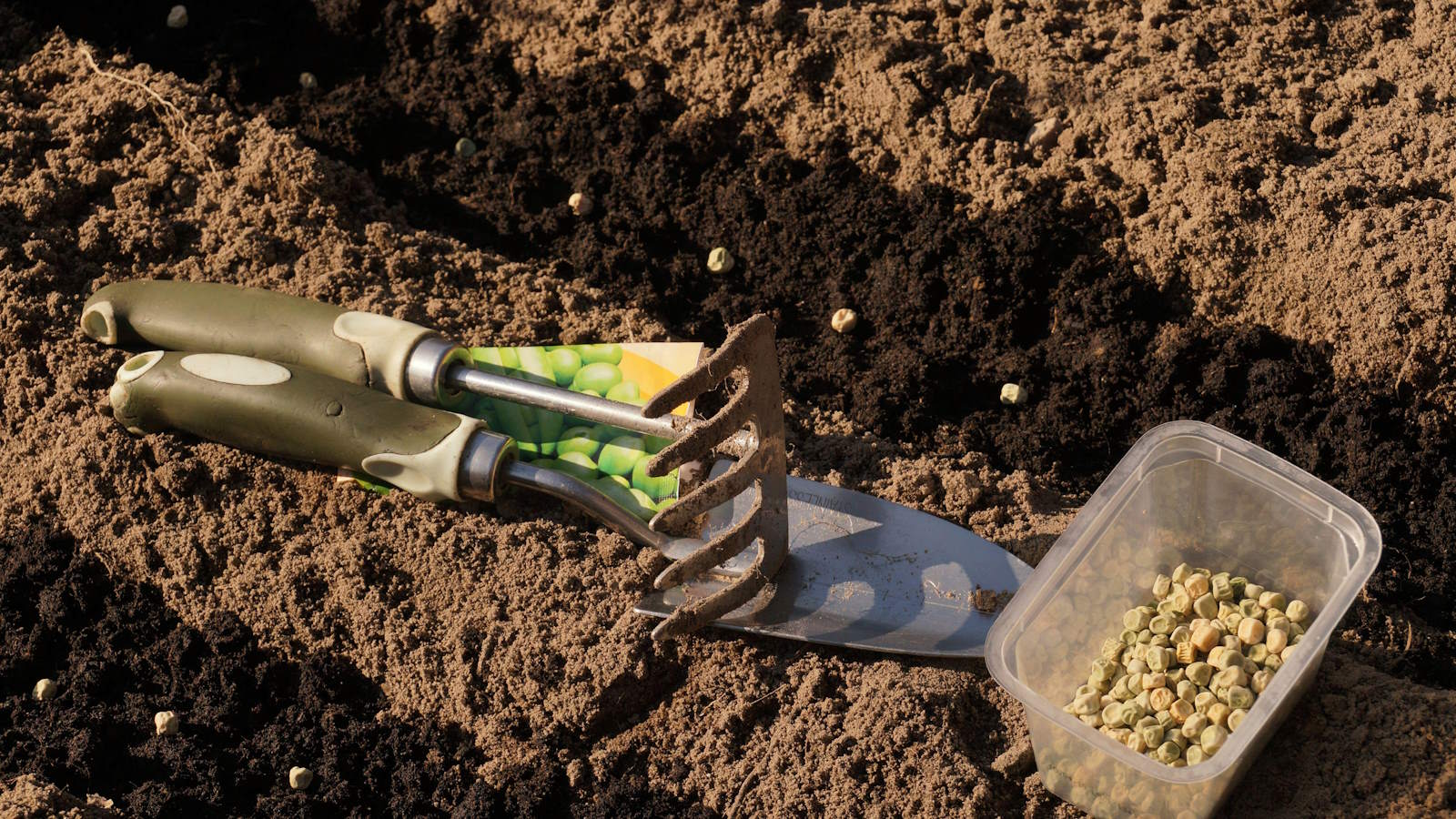
Growing flowers, vegetables, fruit, and herbs from seed is one of the most satisfying tasks you can do as a gardener. You don't necessarily need a large setup to do it either, as sowing seeds outdoors can be one of the most simple and inexpensive ways to fill your garden with plants each year.
With the know-how to germinate seeds successfully outdoors, it opens up a world of opportunities for what you can grow. Whether it is vegetables to feed your family, flowers to cut to brighten up your home, or annual plants to provide pops of color in beds and borders come summer - all of those listed and more can be done by sowing seeds outdoors.
In my years as a professional gardener, I grew lots of plants from seed every year. A lot of those were started indoors, however, there were always certain crops that were directly sown into the kitchen gardens I worked in. On my allotment at home, I also sow seeds outdoors year-on-year to grow lots of edible plants. Using my knowledge picked up over the years, I outline six steps to follow to be successful in sowing seeds outdoors.
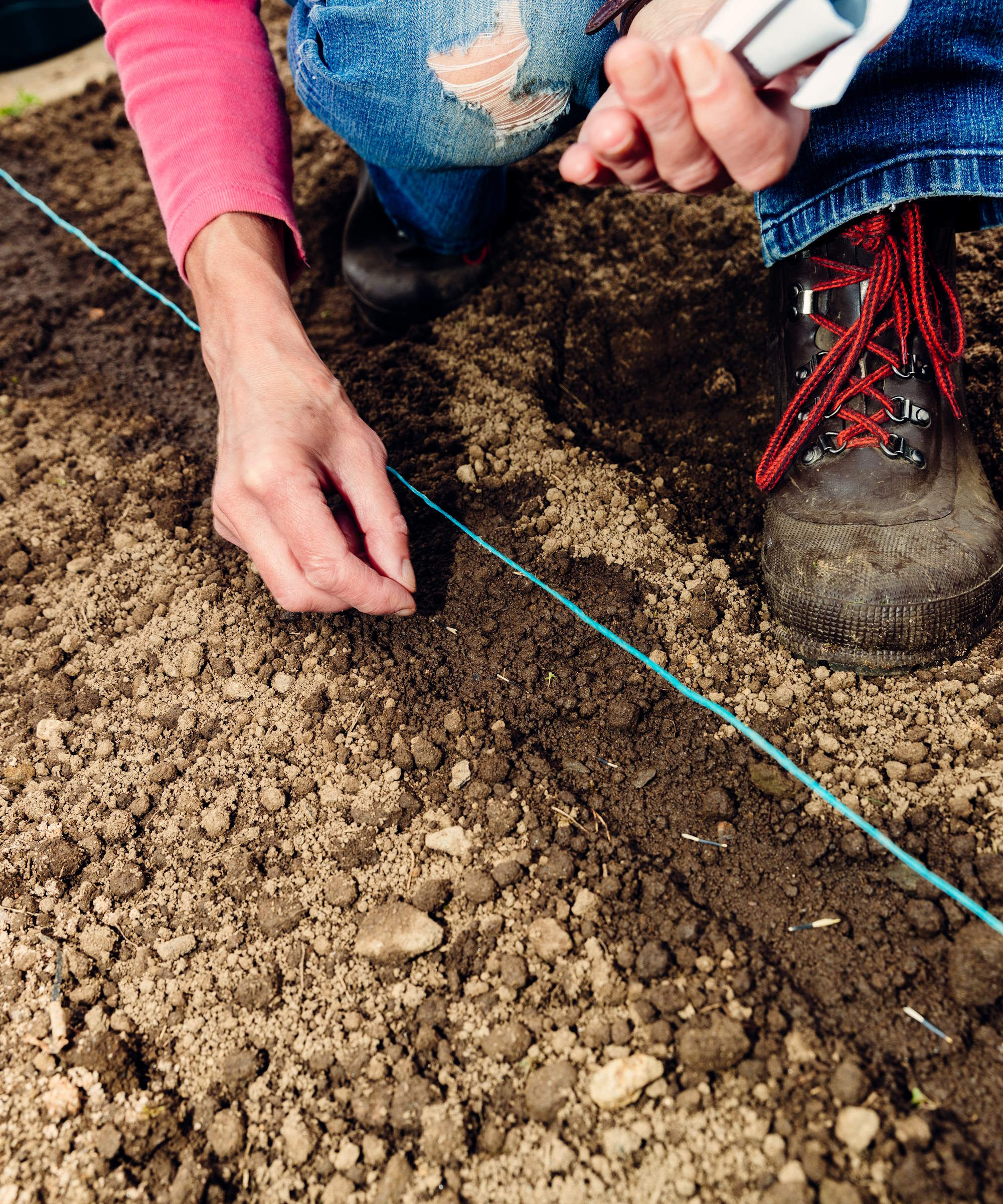
Lots of plants can be grown from seed sown directly into the soil outdoors
What plants can be sown outdoors?
You can sow seeds outdoors for a huge number of plants. Annuals and biennials for flower beds and cut flower gardens are perfect for sowing outdoors, as are many vegetables and herbs.
Tender plants and those that have a long growing season, including the likes of tomatoes and eggplants, are best sown indoors earlier in the year.
Sowing seeds indoors is a more controlled and protected way to start plants off, however, if you are short of indoor space then sowing outdoors can be a successful way to start lots of ornamental plants and vegetables.
When to sow seeds outdoors
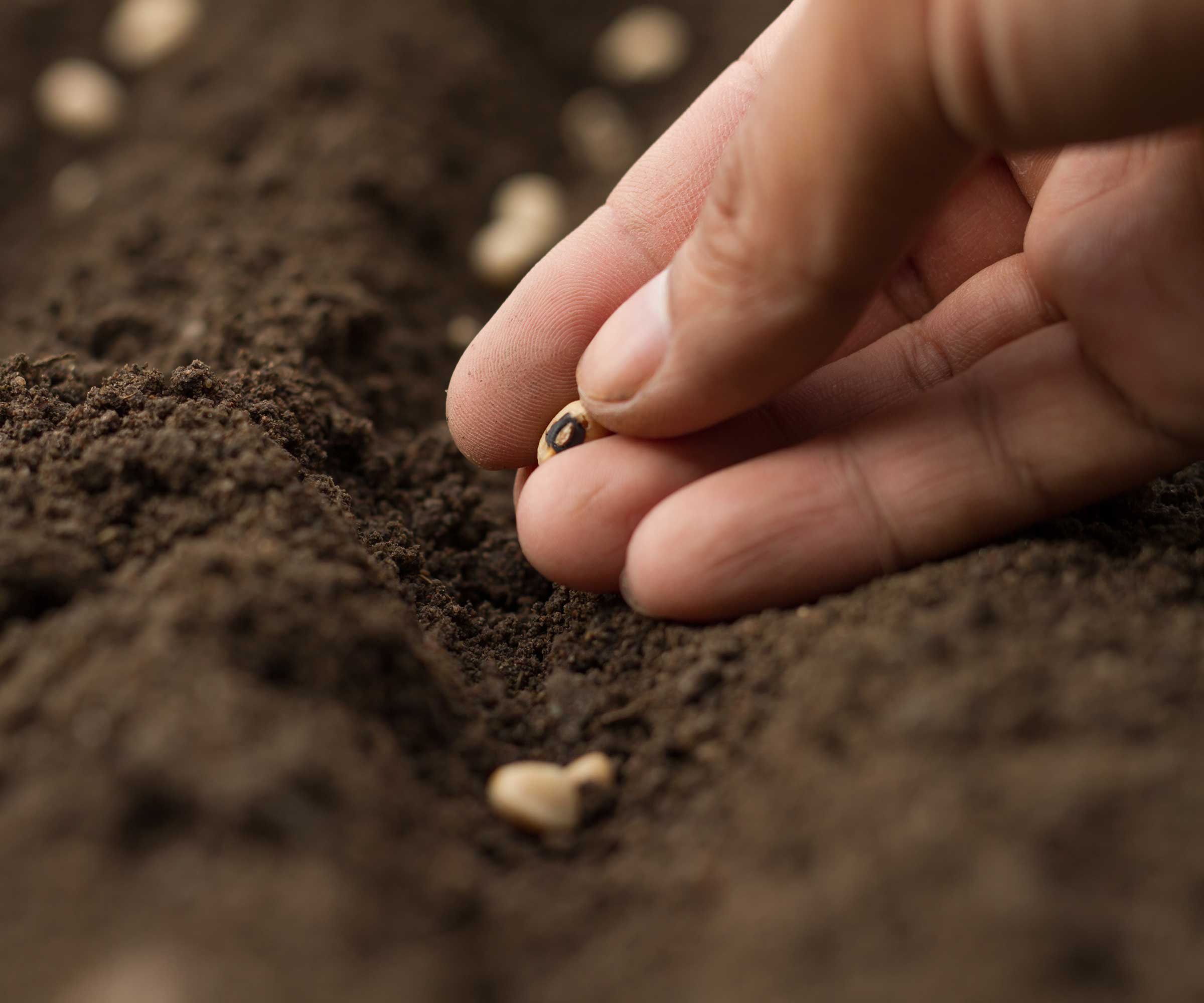
The depth of planting depends on the size of the seed
The exact time to start sowing seeds outdoors will depend on your US hardiness zone and the specific climate in your location.
Design expertise in your inbox – from inspiring decorating ideas and beautiful celebrity homes to practical gardening advice and shopping round-ups.
The window to start seeds outdoors opens once the risk of frost has passed for your area and the soil is workable. How warm the soil needs to be will depend on the specific plant you are planning to sow - so always refer to seed packets to find out the recommended temperatures and sowing times for any flowers, herbs, or vegetables.
The warmer soil temperatures of spring and summer mean lots of fast-growing vegetables and flowers can be sown directly and will germinate quickly. You can warm the soil earlier in the year by using cloches or horticultural fleece to bring forward when you can plant seeds outdoors - as they will also provide a warmer and more protected environment for germination.
How to sow seeds outside - the methods available
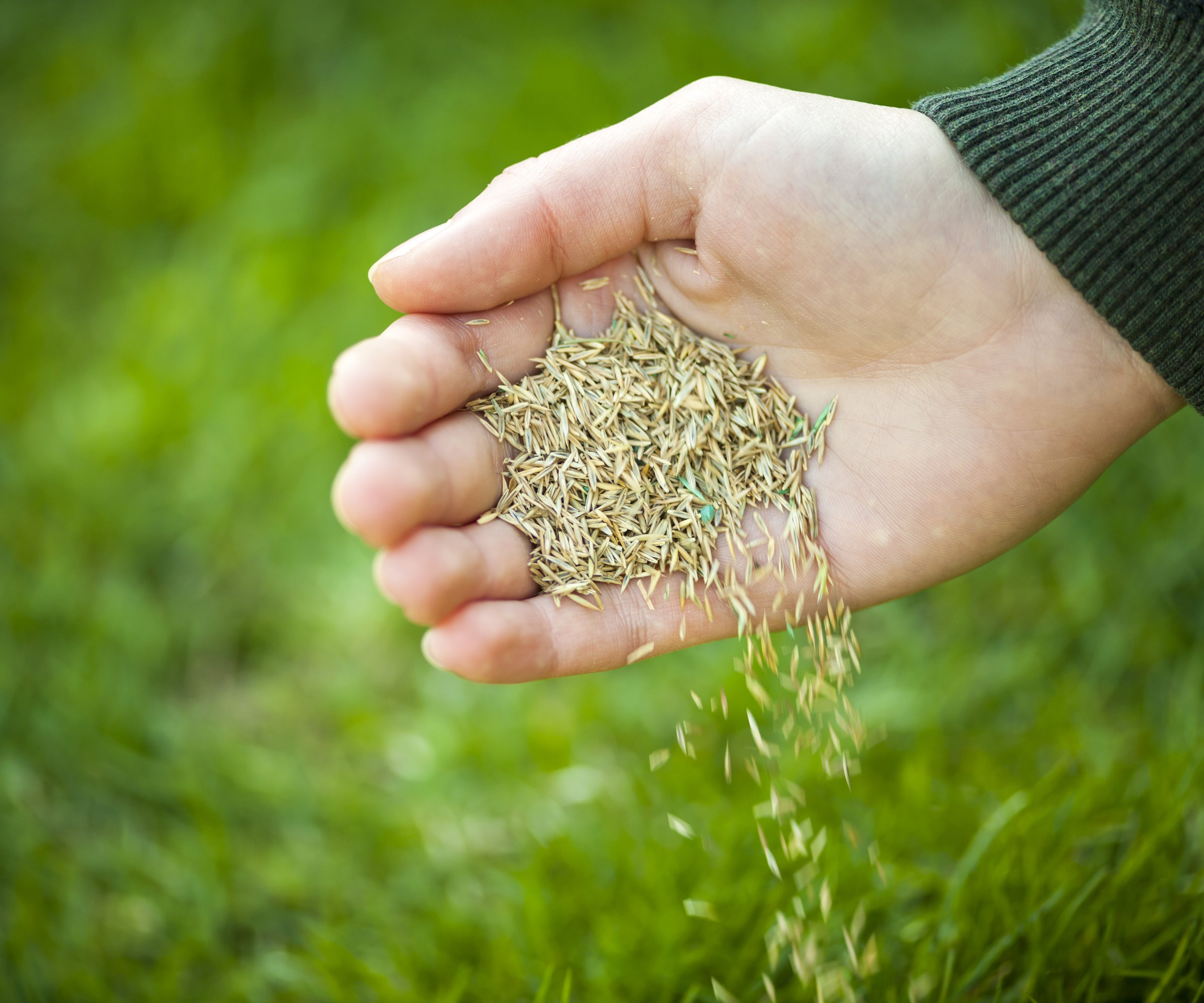
Grass seed is sown by being broadcast over an area
There are two ways in which you may sow seeds outside into borders or a vegetable garden. Seeds are either planted into pre-made drills or holes made into the soil and then covered over, with rows prepared at set intervals as outlined on seed packets. The alternative is to broadcast the seed over the surface of the soil - which tends to be a tactic used primarily to sow grass seed or plant a wildflower meadow.
How to start seeds outdoors in 7 simple steps
Direct sowing seeds outdoors is an easy and economical way to grow lots of plants in your garden. There is no real specialist equipment required to sow and germinate seeds successfully, just give seeds a bit of care and attention and they should grow.
There are outside factors that can hamper your efforts though, including the weather and animals that may be attracted to seeds or seedlings. Here is our simple guide to how to sow seeds outside in just 6 steps:
1. Prepare the soil
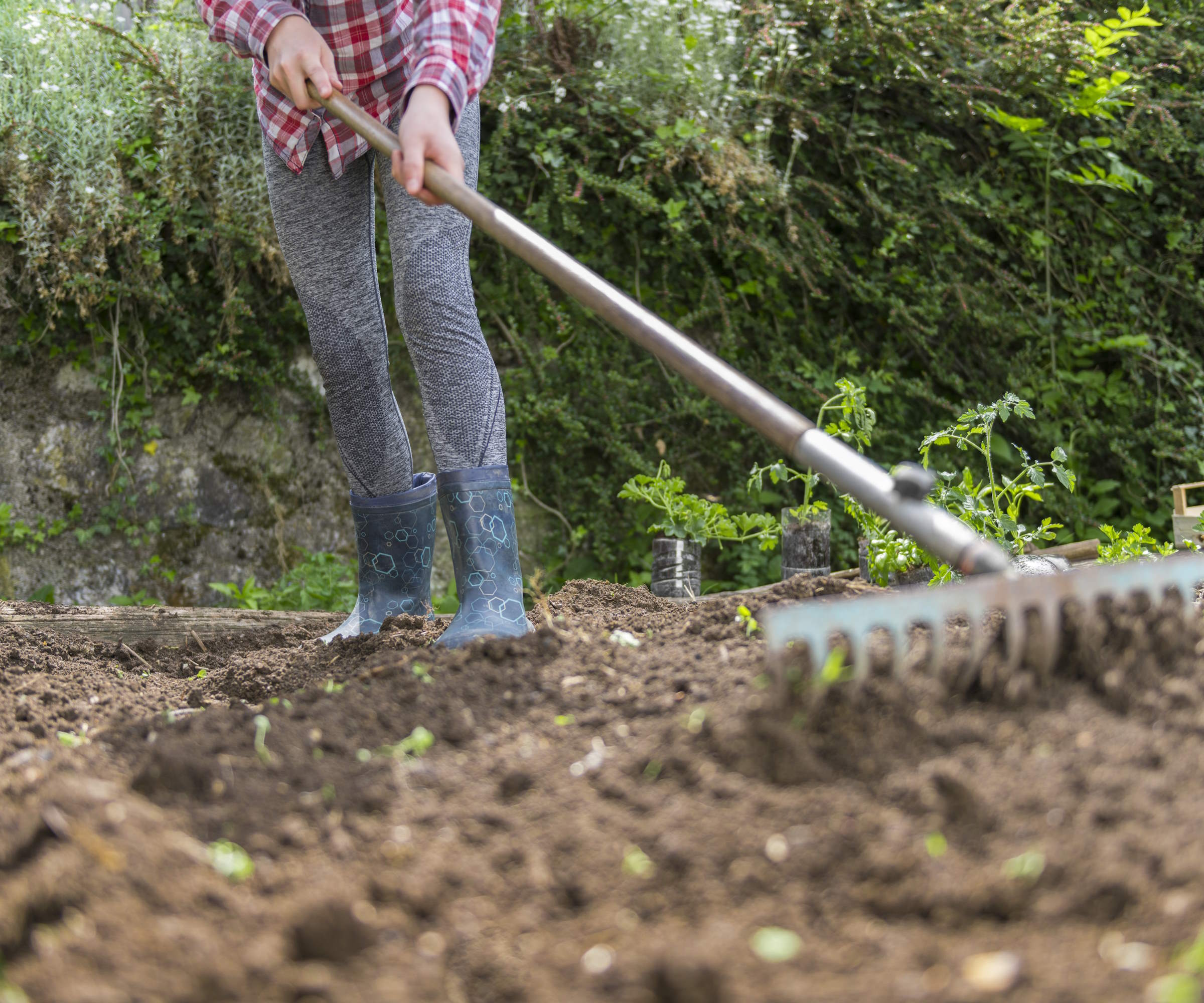
You create a fine tilth to sow seeds outdoors into
A very important step to take time on, as well-prepared soil can help with successful germination and a high germination rate. Depending on your soil type, you may need to incorporate organic matter, such as compost or well-rotted manure, or add a slow-release fertilizer to increase the nutrient levels for your plants.
The soil needs to be thoroughly weeded and have any large stones or debris removed. Any clumps of soil should be broken up and the soil surface needs to be raked to create a fine and level surface for sowing into. If the soil has recently been dug over, it is recommended to tread it to flatten it down. However, if you are doing no-dig gardening this is not a required step - as long as the soil is level you are good to go.
2. Prepare the sowing drills
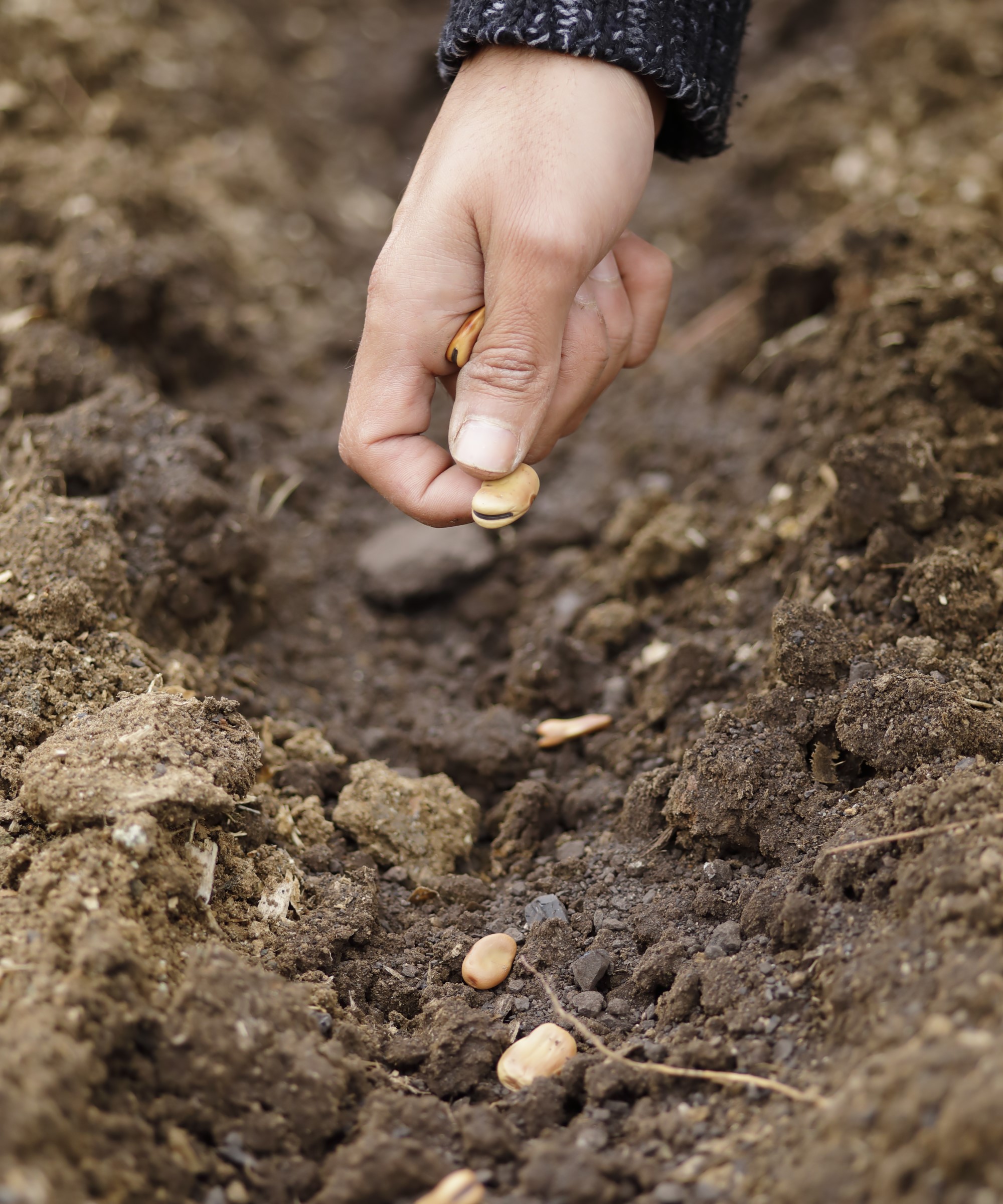
The sowing depth required will be recommended on seed packets
The recommended method of sowing seeds outdoors should be featured on the seed packet. For most plants, sowing into drills or holes in the ground is the preferred method.
When sowing vegetables or flowers for cutting, using string lines can help to ensure straight rows. Make drills into the soil using a cane, garden hoe, or the back of a rake to the recommended sowing depth.
I always found it best to run along the drill more than once to ensure that it is deep enough and soil simply does not just fall back in and fill it up. Gently watering the drills before sowing can help with germination, though take care not to flood the drill with soil again.
For larger seeds, such as pumpkin or squash seeds, individual holes can be made in the soil at the advised spacings.
3. Sow the seeds
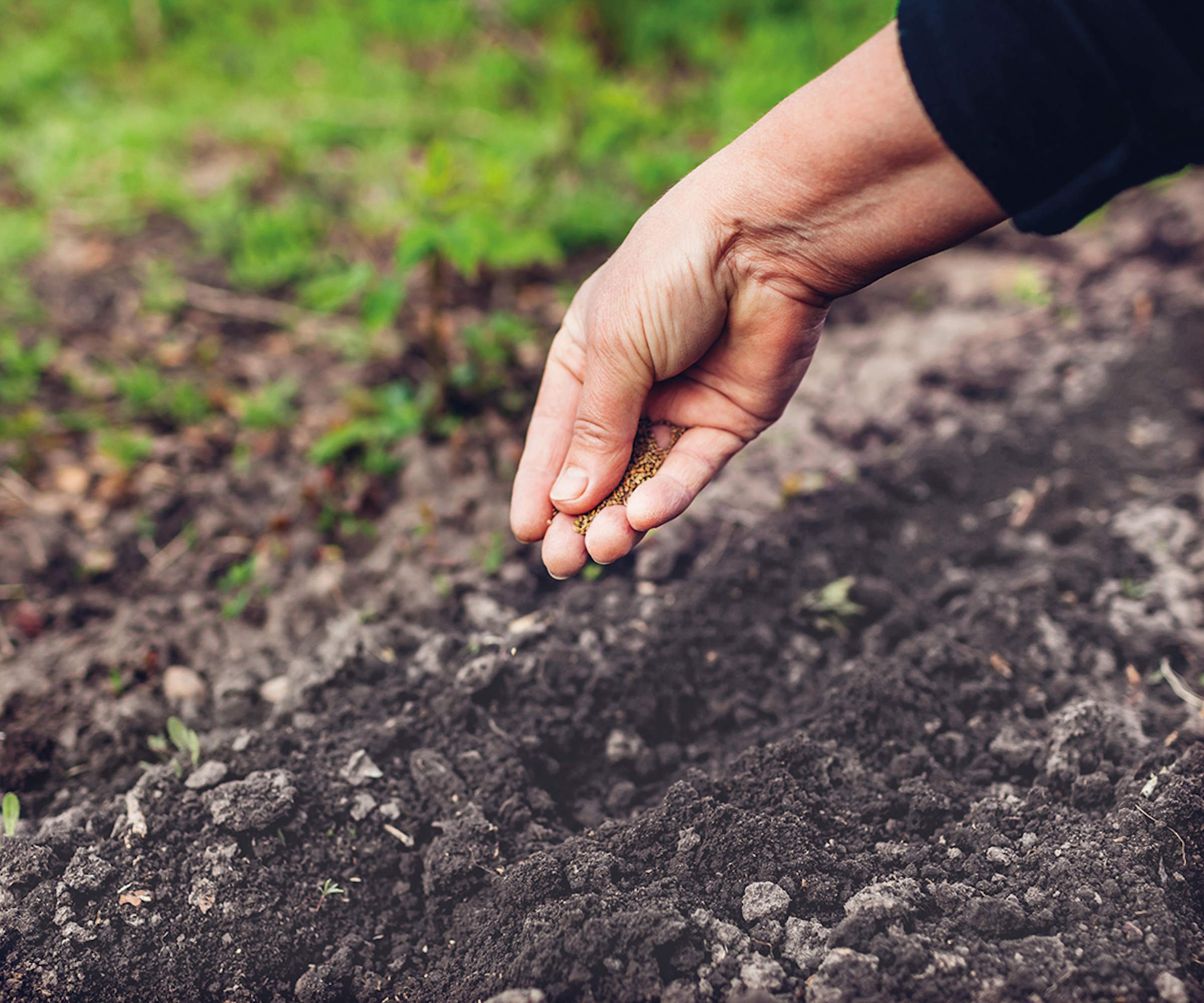
Take care when sowing seeds directly outdoors
Depending on the size of the seeds you are sowing, you can either plant individual seeds at the recommended spacing or lightly scatter smaller seeds along the drill to thin out once they germinate.
Pinching and sprinkling seeds along the drill can be a successful method, while sometimes I take a pile of seeds in the cupped palm of one hand and gently tap them out along the drill using two fingers on my other hand. However you choose to do it, you want to evenly distribute the seeds along the drill, trying to avoid clumps of seeds together and then large gaps where none are sown.
Very fine seeds can be mixed with sand to be sown to help give a bit more control over sowing. Mixing with sand can also be beneficial when broadcasting seeds over the soil surface. Use a rake to lightly cover the drill over again with soil and gently tamp it down.
4. Water the seeds
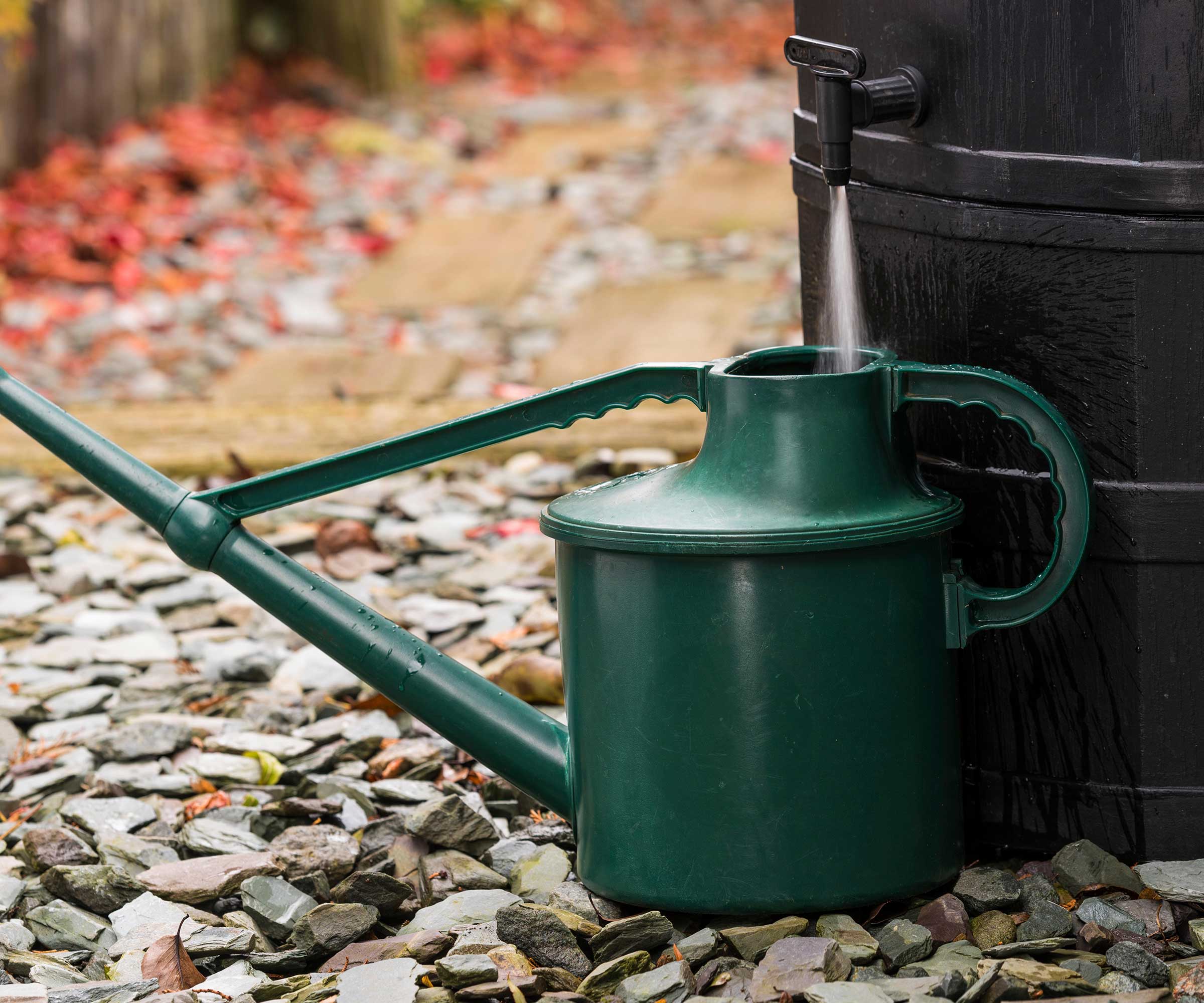
Gentle, and regular, watering is essential to germinating seeds
Even if you moisten the drill before sowing, it is still beneficial to gently water the soil afterwards - but take care to be very gentle. Use a garden hose on a fine spray setting, or a watering can with a fine rose attached, such as this one at Amazon, to carefully moisten the soil without washing the seeds away.
Keep a close eye on when to water over the following days and continue to keep the soil moist, but not waterlogged as this can cause the seeds to rot. When it comes to how to water, always be gentle and try not to disturb the soil too much.
5. Label your seeds
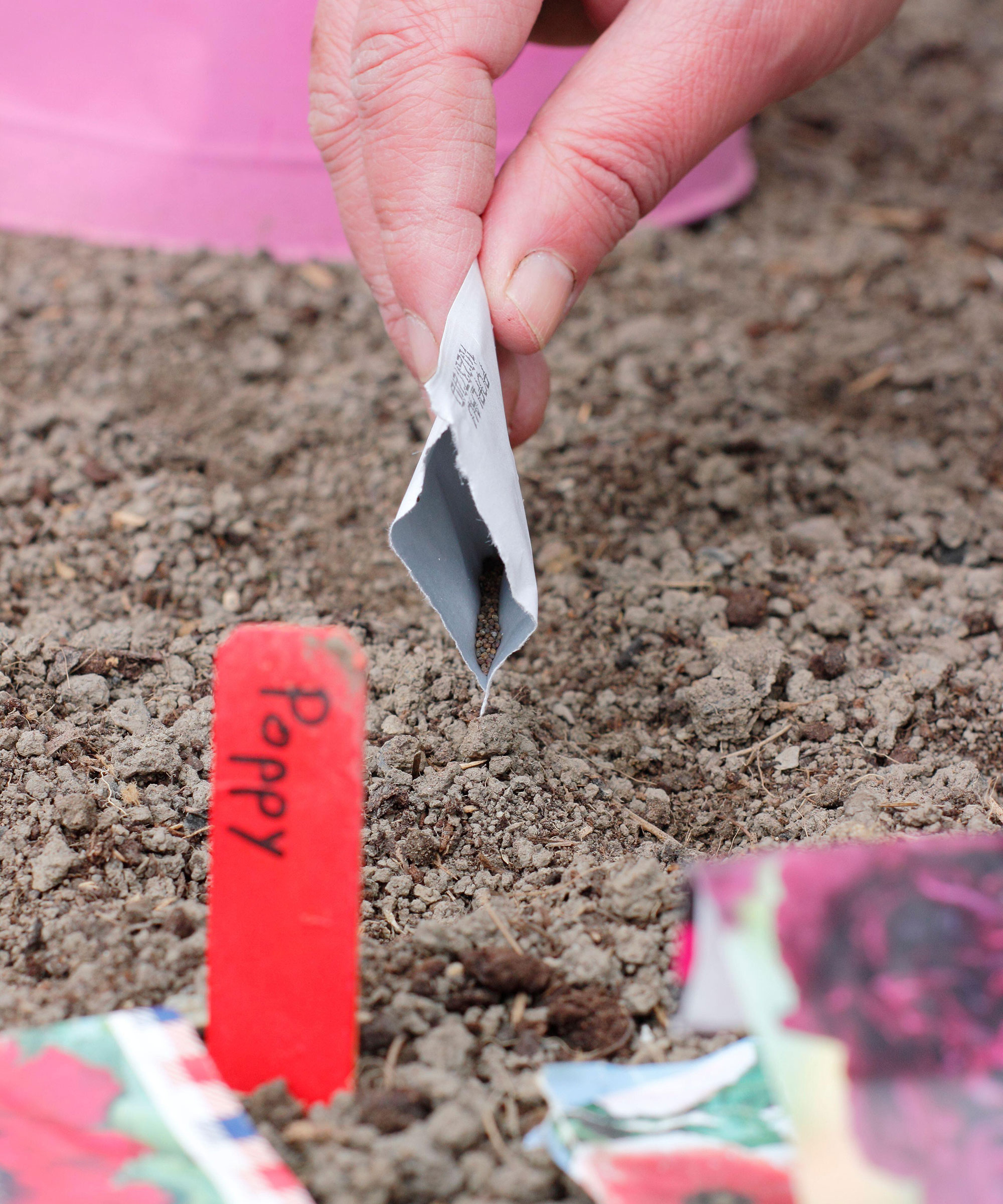
Labels help identify where you sowed seeds outdoors
After taking all that care to prepare the ground and sow the seeds carefully, it would be foolish not to record what you planted. Place a label at the end of the row - or either end to make double sure - so you know what was planted where, and also the date they were sown.
Marking the rows makes it easier to track and identify germination and see the seedlings. It will also help identify which seedlings that pop up may be weeds that need to be removed. You can get plant labels that are plastic, wooden, metal, or slate - whichever you choose may depend on your garden style and budget.
6. Protect the seedlings
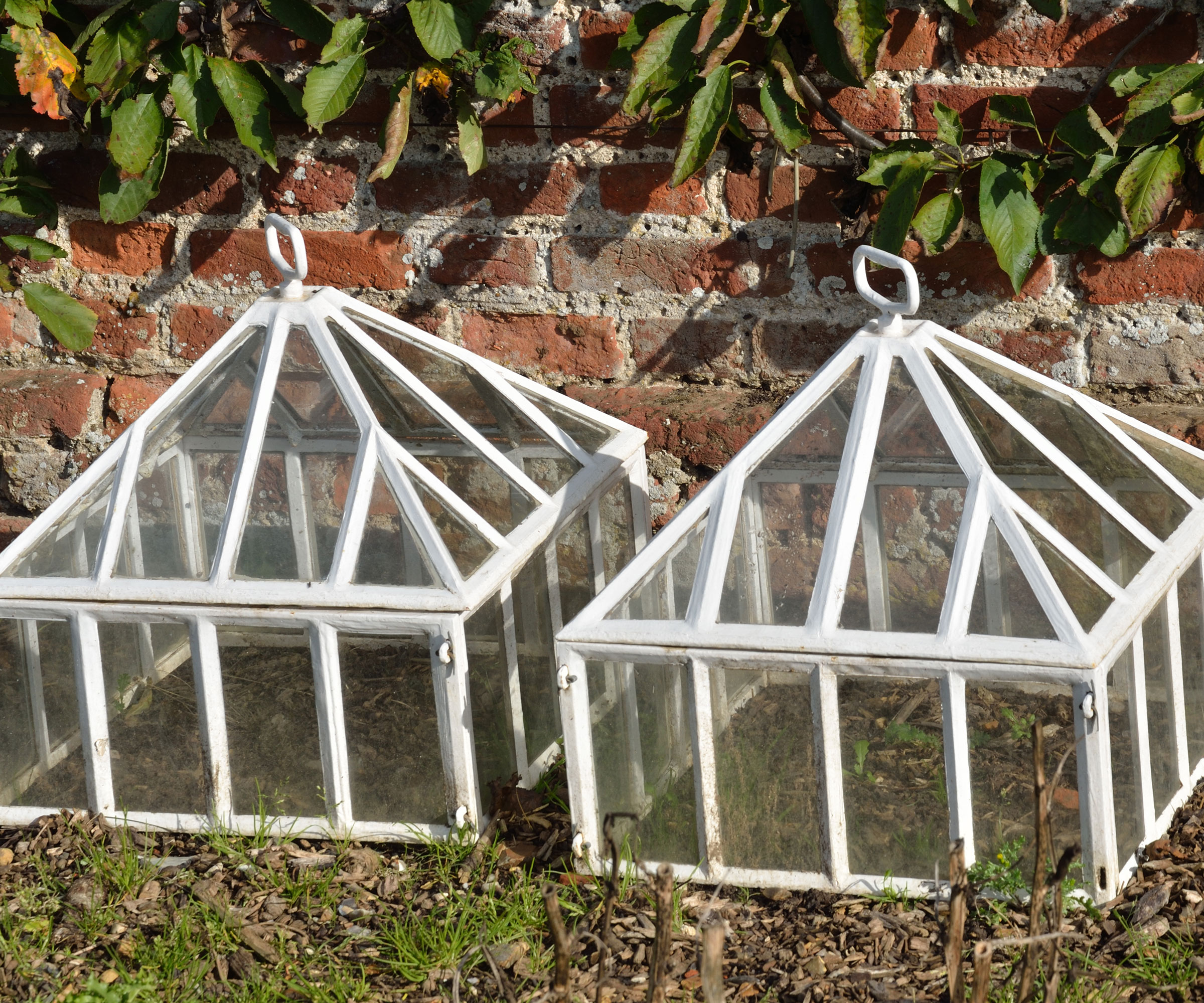
Cloches offer a protected environment to seeds sown outdoors
One of the main dangers of sowing seeds outdoors is the risk that slugs and snails can nibble on seedlings as soon as they have popped up. There are also potential problems if cold weather sweeps in.
Using garden cloches or horticultural fleece can help to protect seeds and keep the soil temperatures warmer, while covering seedlings with mesh can be a way to get rid of slug and snail issues.
Creating boundaries of rough surfaces can also be a slug control method, along with putting beer traps in the garden to tempt the pests away from your precious seedlings.
7. Thin seedlings
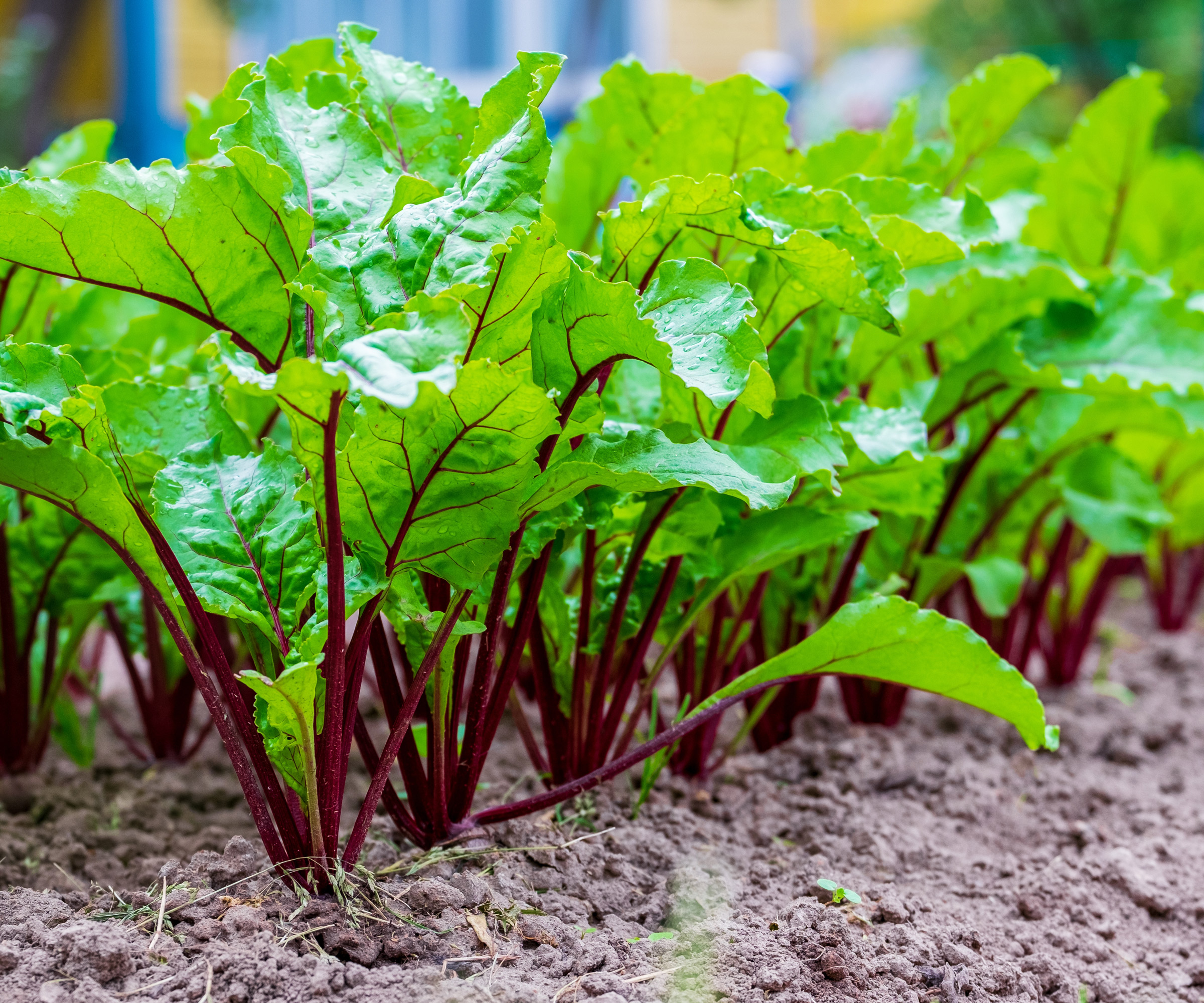
Thin seedlings to allow plants to develop healthily to full size
Unless you were supremely careful when sowing the seeds, it may be required to thin the seedlings as they germinate. Overcrowding can lead to unhealthy seedlings, and plants that will never grow to full size, so removing selected ones helps those that remain to develop into mature and healthy plants.
Gently remove seedlings when they are young to get the recommended spacing. Thinning seedlings when they are small reduces the dangers of the roots being tangled and pulling out other seedlings with them. It may be necessary to do more than one stint of thinning until you get to the final desirable spacings.
FAQs
Can you start seeds in pots outside?
If you grow plants in a container garden, then it is perfectly acceptable to sow seeds outdoors directly into the pots. Any container needs to have drainage holes in the bottom and be filled with a good-quality potting mix.
Sow the seeds at the recommended depth and gently moisten the compost. Keep the soil consistently moist and thin the seedlings as required as they appear. If you practise successional planting in a vegetable garden, you can start seeds in pots outside and then transplant the seedlings into the ground once the space opens up for them.
How long does it take for seeds to germinate outside?
The time it takes will vary depending on the plant, the location, and also the weather conditions. However, it can take between 1-4 weeks for seeds to germinate. While some seeds are notoriously slow to germinate, factors such as low soil temperature and a lack of moisture are usually two culprits that delay germination.
Older seeds can also take longer to germinate, as their viability drops, so it may be worth getting new packets when ordering your seeds for the year.
It is always a great idea to make a seed sowing schedule for the season, which will include all sowings both indoors and outdoors. Putting a plan together can help you get organized and make planting vegetables and flowers feel less stressful.

Drew has worked as a writer since 2008 and was also a professional gardener for many years. As a trained horticulturist, he worked in prestigious historic gardens, including Hanbury Hall and the world-famous Hidcote Manor Garden. He also spent time as a specialist kitchen gardener at Soho Farmhouse and Netherby Hall, where he grew vegetables, fruit, herbs, and cut flowers for restaurants. Drew has written for numerous print and online publications and is an allotment holder and garden blogger. He is shortlisted for the Digital Gardening Writer of the Year at the 2025 Garden Media Guild Awards.
